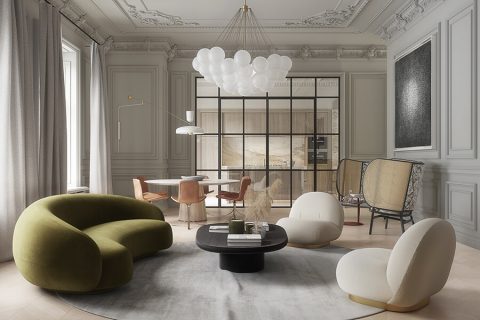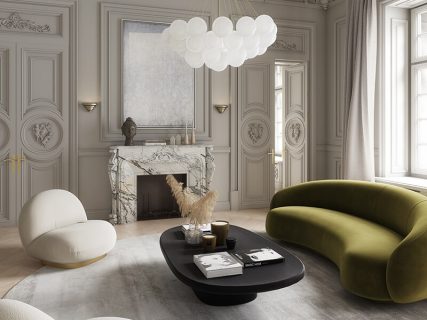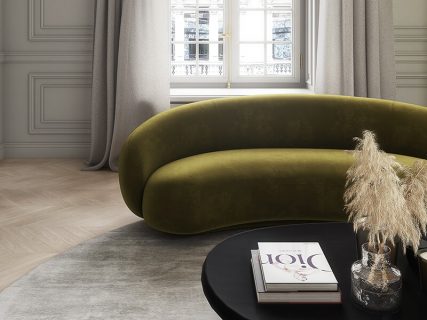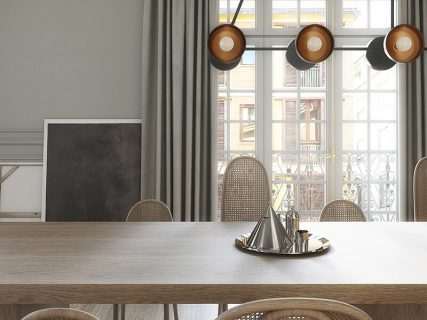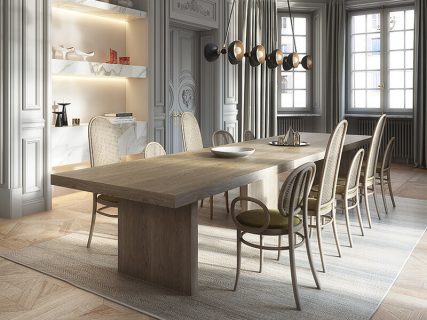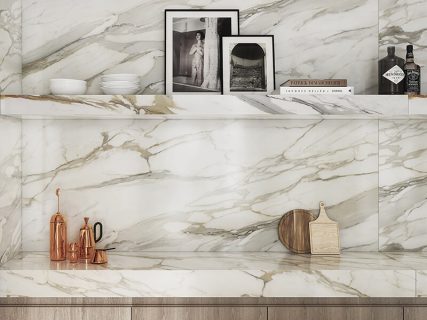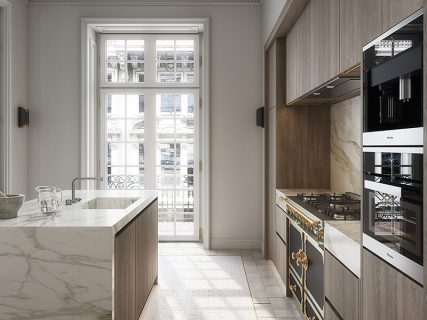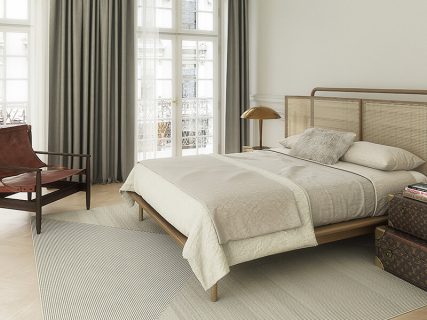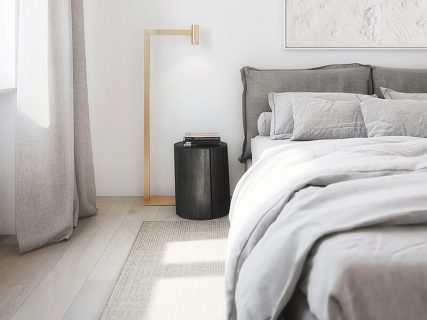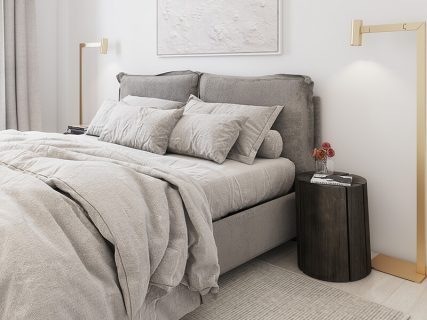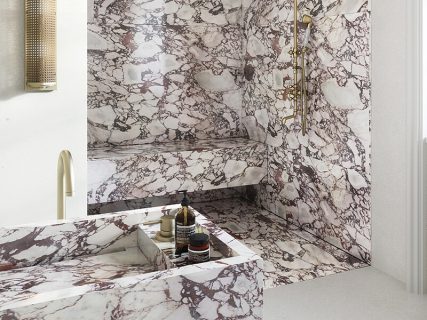Interview with the architecture Studio Gori&Yoon
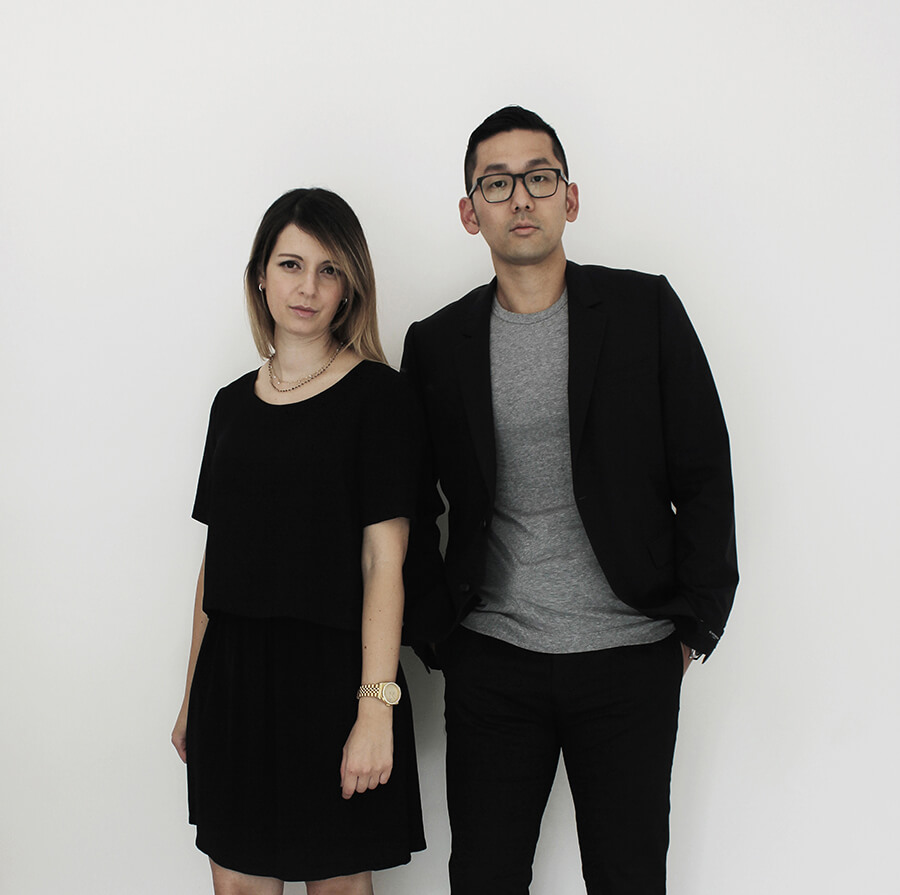 The Gori&Yoon architecture Studio was born in 2018 in Florence by the Italian architect Elisa Gori and the South Korean interior designer Jaehyun Yoon.
The Gori&Yoon architecture Studio was born in 2018 in Florence by the Italian architect Elisa Gori and the South Korean interior designer Jaehyun Yoon.
Their work ranges from architecture to interior design, and defines their taste thanks to the perfect mix of Italian and Korean style, innovation and research, aesthetic simplicity of forms and unmistakable conceptual imprint. Straddling tradition and modernity, Gori&Yoon is the spokesperson for a way of furnishing rich in details and capable of satisfying both the public and private sectors.
Fascinated by the quality of their projects, we asked them to talk a little bit about themselves, briefly telling about their way of working and experiencing the world of interior design.
You come from two distant countries with very different cultures and architectural traditions. What is it like to work together? How do you divide the tasks? What elements do you think you have preserved most of the Florentine and Korean traditions?
The Gori&Yoon Studio is the result of our mutual desire to work together to create a unique and personal style that could reflect the traditions from which we come. The success came shortly after, thanks to a Milan project in via Lovanio whose great resonance on social platforms has provided us with many job offers as well as interviews and mentions in various sector magazines. In our work we divide the tasks and areas of influence, constantly comparing each single step but trying to focus each on the aspect in which we can better express our qualities. The technical and creative parts are then divided equally and treated as aspects of equal importance for the achievement of the final result. I, Elisa, mainly deal with the executive design, while Jaehyun is more dedicated to the creative and decorative part.
Is there any great master who is a particular source of inspiration for you? In the world of design and contemporary architecture, who do you appreciate most?
In general we draw inspiration from everyday life, trying to match technical aspects and functionalism. For the contemporary style we love the designer Piet Boon, able to create not only a minimal and simple style, but to give each of his projects a personal warm shade and great visual welcome. Its extreme attention to detail gives the environment elegance and vitality, elements necessary to make livable every part of the house. We also appreciate Piero Lissoni, whose research and inspiration represents for us an important track to follow.
In your projects you have dealt with both modern and historic buildings with interiors already richly decorated. What is it like to measure yourself against such different realities? Is it difficult for you to bridge the stylistic differences of the worlds to which you belong?
We both belong to a generation where globalization provides more and more expressive ideas every day, enriching the panorama of furniture design with new possibilities. The common points between architecture and interiors of different eras and places are already many, and in the future they will only increase. Contemporary or traditional as it is, for us every environment represents an equal source of inspiration, a challenge in which we love to pour both our personalities merged into a common style.
Your rooms are dominated by white and bright tones. How important do you think it is for an interior designer to be able to create recognizable environments that immediately bear his “signature”?
In the design stages, the discussion with the customer is very important for us in order to better understand its style, taste and needs. Most of the time this step is simple, because whoever contacts us already knows the way we work and marries the aesthetic sense that characterizes us. When we find difficulties instead, we generally try to create a mediation to satisfy everyone, always aiming to affirm our personal vision of the interior.
At the moment you are specialized in private interior projects and for public spaces. Do you have a preference for one or the other? In which project do you think you have best expressed your style?
Up to now we have had the opportunity to work in both fields. We love both very much, although our preference often goes to the private part where we have been able to measure ourselves more often and express ourselves better. The public, however, represents a hub of great interest, because it allows us greater visibility and enjoyment by people.
Do you plan to try your hand at product design in the future or is it beyond your interests? If so, do you already have any ideas about it?
For some time we have looked at product design as one of the possible ways to go and to aim at as a new starting point for our career. At the moment, however, we are focusing on the development of our business both in the public and in the private sector, so we believe we will dedicate ourselves to that area in the future.
In your projects you manage to combine furniture from all over the world in a very effective way: Italian, Scandinavian, American… How do you see the current moment of Italian design? Do you think it still has a prominent role on the world scene?
The value of the materials as well as the craftsmanship of Italian design have always made Made in Italy unique, a flagship to be inspired by historical trends and more recent trends. In its sense, it certainly represents high-end excellence. For our projects, we often also look abroad to diversify the furnishing proposal and move towards more heterogeneous ranges of taste, essential for keeping up to date and in step with the new sector trends. An interesting evolution of Made in Italy could consist in encouraging the entry of new talents from all over the world, perfect for expressing an international taste and further relaunching the style of high-end design. We cite in this sense the Gamfratesi studio, an important Italian-Danish bet that perfectly manages to integrate into hybrid and innovative spaces of taste.
In which of your multiple projects do you think you have expressed your style better? Do you have any brands you particularly turn to denote your “trademark”?
In our work we love to experiment with solutions and styles. For this reason we have decided not to set ourselves any choice limit, preferring to be inspired by the context rather than by particular stylistic conventions. Mixing is fundamental for us to create harmony with space, avoiding both regional and temporal anchors. We believe that our experience has shaped us in this sense: in large cities such as Florence or Seoul, it is not uncommon to see new contemporary and futuristic constructions rise alongside large historic buildings without the visual impact being minimally compromised.
Your project for the Milan apartment in via Lovanio had a huge response on social networks, with hundreds of quotes. How important are these tools today? Do they really help to get in touch with new clients?
Based on our experience, social networks can represent an effective communication tool for architects and interior designers who wish to make their work known all over the world. In the early days, the Gori&Yoon Studio had in fact opened a site to share projects and images of their works, but it was with Instagram that the real opportunities presented themselves: by conveying a communication through images, it was the perfect way to show our work reaching different users all over the world. However, the decisive turning point came when a famous American influencer and interior designer shared our project in Milan in via Lovanio, giving it a driving force followed by numerous offers and job offers.
Ph: Gori&Yoon architecture
